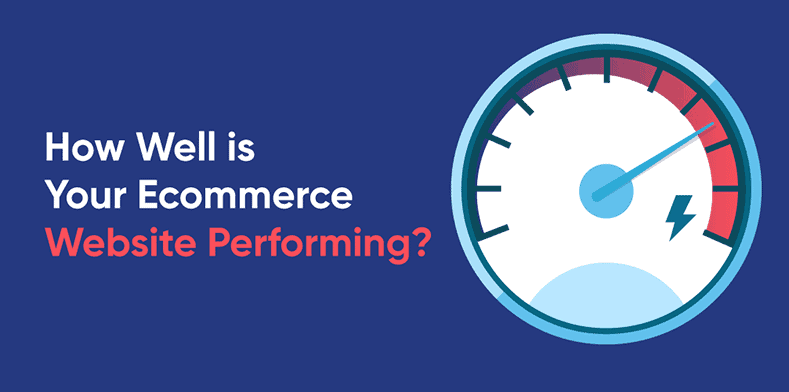With online sales throughout the U.S, Canada and Western Europe expected to reach a total of $288.63 billion by the end of 2017 – an increase of 14.2% from last year alone – it’s safe to say that your ecommerce website is your treasure trove for omnichannel retail success.
But is your website working hard enough and performing well for you? In other words, is it making you the most revenue your business is capable of right now? Are your average order values maxed out? How high (or low) are your shopping cart abandonment rates?
These are all the types of questions you need to be asking yourself about your website. With so much competition out there – on average over 400,000 new businesses launch each month in the U.S – you need to ensure that if any of your answers give you even the tiniest flicker of doubt; then you need to do what you can to fix it and keep your website fighting fit.
Start with asking yourself these questions and take note of the advice on how to get the most positive answers from each one…
1. How good are your website conversion rates?
When evaluating your return on investment (ROI) for the costs spent on having a great ecommerce website, conversion goals are one of the simplest and best ways to measure this. Quite simply, your conversion rate is how many of your website visitors actually buy from you.
Using website tracking and tools like Google Analytics, calculating your conversion rate is really easy to do. Analytics tools will be running these calculations for you:
- Lead Generation
- Number of Leads Collected / Total Traffic to Site x 100 = Conversion Rate
- Sales
- Number of Sales / Number of Visitors x 100 = Conversion Rate
If this number is lower than you hope, consider putting yourself in your shoppers’ shoes and investigate these parts of your website:
- Are your call-to-actions simple and clear? Check that they have only one ask to avoid confusion.
- Do your product listings contain all necessary information about your products?
- Have you invested in high quality product images and videos in your listings?
- Is adding items to basket easy and quick to do?
2. How many new vs returning customers do you have?
When tracking how many of your website visitors are new versus returning, you can use this data to your advantage based on the goals you have for your business.
- Are you most interested in building a loyal following of regular customers?
- Or would you prefer your brand awareness is maximized to consistently bring in new shoppers?
- Or… would you like a happy medium of the two?
By knowing these goals plus how your website is currently performing against them, you can start to make some adjustments to better suit your business growth. Consider these action points:
- For maximized revenues from returning visitors, offer them landing pages showcasing what will interest them the most. After all, you already know what they bought or were interested in last time, so capitalize on that!
- For getting new visitors excited about your products, landing pages should showcase your best sellers and provide all the information they need to minimize any doubt of buying from you. Consider adding some customer testimonials to landing pages and promote any shipping offers you have.
3. Where are your website visitors coming from?
Ensure you know how your website visitors are hearing about you. With most retail businesses, your highest referrer of traffic should be organic (i.e search engines). But your visitors may also hear about you from social media, an email newsletter or an event.
Make the most of your highest referrers and consider investing more in those to accelerate your business growth. For ranking higher in search engines, ensure your landing pages, product listings, videos and blogs are all optimized for SEO.
4. What are your average order values?
When running any profitable business, you want to ensure your average order values are as high as they can be or of a decent value to ensure the costs involved with getting that order out of the door are actually worth it. Consider how much money you spend on warehouse staff, packaging, marketing and shipping. Are your average order values high enough to make all of that worthwhile?
To calculate your AOV (average order value), divide your revenue by number of transactions over a specific time period. This will tell you how much each customer contributes to your bottom line.
Not high enough? Consider offering free or discounted shipping for orders over a certain value, or offer discounts for multiple items bought.
5. How high (or low) are your shopping cart abandonment rates?
Sadly, there is little point in running an ecommerce website if your browsers bail before buying. However, with over two thirds of shoppers giving up part of the way through checkout, how are you ever going to convince those shoppers to buy from you?
There are various tools, such as Rejoiner and Jilt that can automatically send emails to those browsers who bailed at checkout. Sometimes, a carefully crafted (and personalized) email, answering any questions that may have caused consumer doubt, plus a link back to their abandoned cart may be all you need to make a sale.
If your abandonment rates are consistently high, evaluate your product listings, FAQ pages, shipping fees and returns policies. Are all consumer questions answered in those? Is there anything that could cause browsers to doubt buying from you? Tackle those and check that your abandonment rates decrease over time.
These are just some of the questions you should be asking yourself when evaluating how effective your ecommerce website is. Be fair to your business goals and budgets – if you don’t like the answers to some of these questions, investigate and make some changes where possible. This will be just one of the keys to your retail success and growth.
Over to you now – what are some of the questions you ask yourself to evaluate how well your ecommerce website is performing? Share your thoughts in the comments below…




